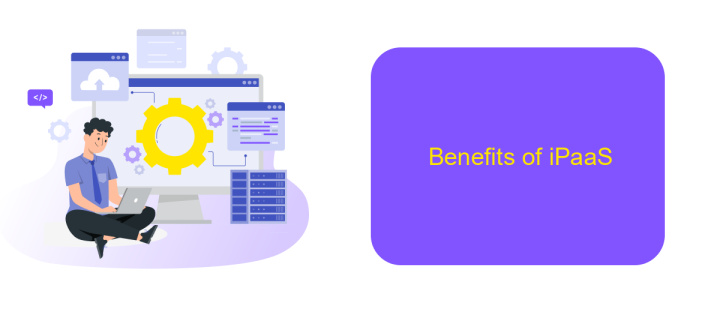iPaaS Architecture Diagram
An Integration Platform as a Service (iPaaS) architecture diagram serves as a visual representation of the components and data flows within an iPaaS solution. It illustrates how various systems, applications, and services are interconnected, enabling seamless data integration and process automation. This article delves into the essential elements of an iPaaS architecture diagram, providing insights into its structure and functionality.
Introduction
In today's rapidly evolving digital landscape, businesses are increasingly relying on integrated platforms to streamline operations and enhance productivity. An Integration Platform as a Service (iPaaS) offers a comprehensive solution for connecting disparate systems and automating workflows. The architecture diagram of an iPaaS provides a visual representation of how various components interact within the platform, ensuring seamless data flow and process integration.
- Centralized management of integrations
- Scalability to handle growing data volumes
- Enhanced data security and compliance
- Real-time data synchronization
- Support for diverse integration patterns
One such service that exemplifies the power of iPaaS is ApiX-Drive. This platform simplifies the process of setting up integrations between different applications, enabling businesses to automate tasks without extensive coding knowledge. By leveraging the capabilities of ApiX-Drive, organizations can achieve efficient and reliable data connectivity, ultimately driving better business outcomes.
Key Concepts

iPaaS (Integration Platform as a Service) architecture is designed to streamline the integration of various applications and services within an organization. It provides a centralized platform for managing data flows, ensuring seamless connectivity between disparate systems. Key components include connectors, data transformation tools, and workflow automation capabilities. These components facilitate real-time data exchange and enable businesses to respond swiftly to changing market demands.
ApiX-Drive is a notable example of an iPaaS solution that simplifies the integration process. It offers an extensive range of pre-built connectors for popular applications, allowing users to quickly set up integrations without extensive coding. With its intuitive interface and robust automation features, ApiX-Drive enables organizations to create efficient workflows, reducing manual intervention and minimizing errors. This enhances overall operational efficiency and supports scalable business growth.
Integration Capabilities

Integration capabilities are a cornerstone of any iPaaS architecture, enabling seamless connectivity between disparate systems and applications. These capabilities ensure that data flows smoothly across various platforms, enhancing operational efficiency and business agility.
- Data Integration: Facilitates the synchronization and migration of data between different databases and applications.
- Application Integration: Connects various software applications to work together as a cohesive system.
- Process Integration: Automates workflows and business processes across multiple systems.
- API Management: Manages and secures APIs to streamline communication between services.
- Real-time Integration: Provides instant data transfer and updates between integrated systems.
Services like ApiX-Drive offer robust solutions for setting up these integrations effortlessly. With ApiX-Drive, businesses can automate data transfer, manage APIs, and integrate applications without extensive coding. This not only simplifies the integration process but also significantly reduces the time and resources required to maintain seamless connectivity across platforms.
Benefits of iPaaS

Implementing an Integration Platform as a Service (iPaaS) can significantly streamline and enhance your business operations. This cloud-based solution allows for seamless integration of various applications, data, and processes, ensuring that your systems work together efficiently.
One of the primary benefits of iPaaS is its ability to simplify complex integrations. With tools like ApiX-Drive, businesses can automate and manage integrations without the need for extensive coding knowledge. This not only saves time but also reduces the likelihood of errors that can occur with manual integration processes.
- Enhanced efficiency through automation
- Scalability to match business growth
- Improved data accuracy and consistency
- Cost savings on development and maintenance
- Faster time-to-market for new services
Moreover, iPaaS solutions like ApiX-Drive offer robust monitoring and management features. This ensures that your integrations are always up-to-date and functioning correctly, providing a reliable backbone for your business operations. By leveraging iPaaS, companies can focus more on their core activities and less on the technical complexities of system integration.
Conclusion
The iPaaS architecture diagram provides a comprehensive overview of how integration platforms can streamline and optimize business processes. By visualizing the various components and their interactions, organizations can better understand how to effectively manage data flows, enhance interoperability, and ensure seamless connectivity across diverse systems. This holistic approach not only simplifies complex integrations but also fosters agility and scalability, essential for modern enterprises.
Furthermore, leveraging tools like ApiX-Drive can significantly ease the implementation of iPaaS solutions. ApiX-Drive offers a user-friendly interface and robust features that facilitate the configuration of integrations without extensive technical expertise. By automating data synchronization and ensuring real-time updates, such services empower businesses to focus on core activities while maintaining efficient and reliable system integrations. In conclusion, a well-designed iPaaS architecture, complemented by powerful tools, is crucial for achieving operational excellence and driving digital transformation.
- Automate the work of an online store or landing
- Empower through integration
- Don't spend money on programmers and integrators
- Save time by automating routine tasks
FAQ
What is an iPaaS architecture diagram?
Why is an iPaaS architecture diagram important?
What are the key components of an iPaaS architecture diagram?
How can I ensure data security in an iPaaS architecture?
What tools can help in automating and setting up integrations in an iPaaS architecture?
Apix-Drive is a simple and efficient system connector that will help you automate routine tasks and optimize business processes. You can save time and money, direct these resources to more important purposes. Test ApiX-Drive and make sure that this tool will relieve your employees and after 5 minutes of settings your business will start working faster.


